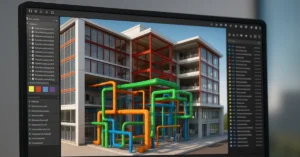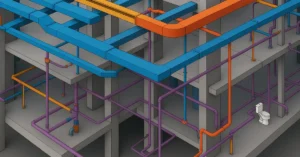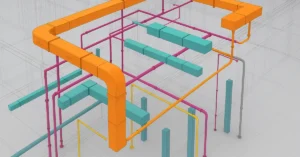Exploring Naples’ Overlooked Yet Striking Brutalist Architecture
Naples, Italy, a city globally celebrated for its ancient ruins, Baroque churches, and Renaissance masterpieces, also holds a lesser-known architectural secret—its collection of Brutalist buildings. Though often overshadowed by the city’s classical beauty and historic charm, these modernist structures present a bold visual dialogue between old and new. In this blog, we uncover the underrated Brutalist buildings in Naples, demonstrating why they deserve a place in the city’s architectural narrative.
What is Brutalist Architecture?
Brutalist architecture emerged in the mid-20th century as a response to the ornate styles that dominated the previous decades. With roots in the post-war reconstruction period, Brutalism is characterized by its raw, exposed materials (especially concrete), modular forms, and a utilitarian aesthetic. Though often polarizing, this architectural language emphasizes functionality and integrity in structure, making it both a political and aesthetic statement.
In Italy, Brutalism found its own expression, blending rigid modernist ideas with Mediterranean sensibilities. Naples, in particular, embraced the style in its public housing projects, university buildings, and government facilities during the 1960s and 70s.
Why Naples is an Unexpected Brutalist Hub
While cities like London and Boston are frequently cited in discussions of Brutalist architecture, Naples offers a uniquely Mediterranean twist on the style. Brutalist buildings in Naples often incorporate regional materials and respond to the city’s vibrant, chaotic energy. These concrete giants stand in stark contrast to Naples’ more traditional architecture, yet they tell a compelling story of a city striving toward modernity in the face of its complex history.
Brutalist Buildings in Naples You Shouldn’t Miss
1. Vele di Scampia
Location: Scampia district, northern Naples
Architect: Franz Di Salvo
Year: 1962-1975
Perhaps the most infamous Brutalist structure in Naples, the Vele di Scampia (“Sails of Scampia”) was originally conceived as a utopian housing project. The complex was designed with open spaces and community interaction in mind. Over time, however, it became a symbol of urban decay, plagued by poverty and crime. Despite this, the Vele remain architecturally significant. Their imposing sail-like structures and raw materiality are classic Brutalist traits. Although some buildings have been demolished, others remain, preserved as both architectural landmarks and cautionary tales.
2. Centro Direzionale di Napoli (Naples Business Center)
Location: East of Naples, near Poggioreale
Architect: Kenzō Tange (Master Plan)
Year: 1982-1995
This ambitious urban project was Naples’ attempt to decentralize its business and administrative functions. Designed by Japanese architect Kenzō Tange, the Centro Direzionale blends International Style with Brutalist elements. Massive concrete towers, minimalist pedestrian zones, and a futuristic layout make this area a fascinating Brutalist experiment. It’s one of the few places in Naples where concrete modernism is celebrated and well-maintained.
3. Federico II University Science Buildings
Location: Monte Sant’Angelo campus
Year: 1980s
The science departments of Naples’ most prestigious university occupy a campus designed with Brutalist principles. Functional, austere, and bold in form, these buildings are entirely utilitarian, with little ornamentation. They showcase how Brutalism in Naples extended into academia, reflecting the values of progress, rationality, and accessibility.
4. Policlinico Hospital Complex
Location: Via Sergio Pansini, Naples
Year: Mid-20th century
The Policlinico Hospital is a perfect example of institutional Brutalism. Its labyrinthine structure and repetitive concrete forms evoke the efficiency-driven designs typical of mid-century public architecture. Despite its grim exterior, the hospital’s form follows function, maximizing internal circulation and patient capacity.
5. INA Casa Housing Projects
Location: Across Naples, notably in Secondigliano and Ponticelli
Year: 1950s-1960s
Part of a nationwide post-war housing initiative, INA Casa developments in Naples employed Brutalist ideas to build quickly and affordably. While not as monumental as the Vele, these housing blocks embody the same ethos: concrete as a democratic material, meant to serve the masses. Their clean lines and modular layouts are practical responses to post-war urban challenges.
Public Perception and the Changing Narrative
Brutalist buildings in Naples have not always been warmly received. Many were criticized for their stark appearance and association with social issues. Over time, however, public perception is shifting. Architects, historians, and urban explorers now advocate for their preservation, highlighting their cultural and historical value.
Social media has also played a role in revitalizing interest in Brutalist structures. Instagram pages and architecture blogs increasingly showcase the aesthetic appeal of these “concrete monsters,” casting them in a new, often romantic light.
Brutalism as Social Commentary
Many of Naples’ Brutalist buildings were created with social justice in mind. They were built to house the working class, educate future generations, and heal the sick. Their monumental scale reflects the ambitions of post-war Italy: to rebuild quickly, efficiently, and equitably. In this sense, Brutalism in Naples is not just a style but a statement of civic responsibility.
The Vele di Scampia, for example, may have failed in execution, but its intent was noble. It aimed to rehouse those in poor conditions and foster community through thoughtful urban planning. Understanding these intentions is key to appreciating the deeper layers of Naples’ Brutalist architecture.
Exploring Naples Through a Brutalist Lens
For travelers and locals alike, exploring Brutalist buildings in Naples offers a different perspective on the city. Walking from the Baroque facades of the historic center to the concrete slabs of the suburbs reveals the city’s layered history and evolving identity.
Create your own architecture tour by visiting:
- The Centro Direzionale for its modern cityscape
- Vele di Scampia to understand socio-political architecture
- Federico II’s campus for educational Brutalism
- Policlinico for healthcare-oriented design
- INA Casa sites for early post-war residential projects
This juxtaposition of styles makes Naples an open-air museum of architectural evolution.
Why Brutalist Buildings in Naples Matter Today
In an age where sustainability and authenticity are prized, Brutalist architecture is seeing a renaissance. Its emphasis on local materials, honest construction, and community use align with many of today’s design values. Naples, with its chaotic charm and historic depth, provides a compelling backdrop for these structures.
Brutalist buildings in Naples are artifacts of a particular time in Italy’s development. They reflect the dreams and disillusionments of a society in transition. Preserving them is not just about saving concrete; it’s about remembering who we were and what we aspired to be.
Conclusion
Brutalist buildings in Naples may be underappreciated, but they are powerful witnesses to the city’s modern story. With their raw, imposing forms and social ambitions, they offer a counterpoint to Naples’ romantic image. Whether admired for their aesthetics, historical context, or ideological roots, these buildings deserve recognition and respect.
So next time you’re in Naples, look beyond the domes and frescoes. Let the rough textures and stark lines of Brutalism surprise you. Because sometimes, beauty hides in concrete.
If you’re interested in learning more about architecture firms in Europe, check out this comprehensive list of the top 50 firms compiled by Archgyan. From innovative startups to long-established industry leaders, this list has it all. Take a look and discover some of the most inspiring and influential architecture firms in Europe today.
If you’re interested in architecture and want to learn more about this amazing field, subscribe to our podcast on youtube
For more SketchUp tutorials, head to https://www.sketchupguru.com










